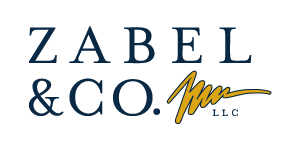In a modern workplace, it is all too common to be brought into meetings, group chats, and other discussions where your presence isn’t really required to come to a successful business decision. Companies that focus on having lots of different stakeholders involved in multiple areas of the organization commonly see the symptoms of collaboration overload.
Understanding collaboration overload and the effect that it can have on your company can help you to find effective solutions for streamlining your organization and improving employee retention.
What Is Collaboration Overload?
Collaboration overload occurs when there is an abundance of routine meetings, group emails or chats, and other efforts between employees to solve a single challenge in a company.
Symptoms of collaboration overload include:
● A full calendar involving hours of daily meetings
● Regular online chats with input from multiple members of a team
● Emails that include a lot of CCs
● A decrease in employee retention
Collaboration overload doesn’t just occur at an organizational level. Individuals can also be responsible for creating their own collaboration overload when they oversee tasks they don’t need to be involved in, rather than delegating them to appropriate team members.
What Leads to Collaboration Overload?
There are several common triggers of employee collaboration overload. These include:
1. A Desire to Help Others
While this is often considered to be a positive trait to have in the workplace, being too willing to help others can lead to employee burnout. In time, employee burnout can cause your retention rate to suffer as workers leave your company in search of organizations where they won’t have to juggle so many tasks.
2. The Need to Exert Influence or Seek Respect Within the Organization
Everyone wants to feel needed in the workplace. But it’s also important to recognize when others need expertise and when to let someone else take the lead.
For example, a sales manager shouldn’t pipe in too much about details in accounting procedures. There are other qualified individuals who can provide necessary insight in a quicker amount of time than the sales manager may be able to.
Individuals who are overstepped may not feel as necessary to the team and will likely seek other employment opportunities.
3. Concerns About Performance
There’s a tendency among employees to think that if they don’t take on every task that they are asked to handle, they will be seen as bad workers or become less likely to attain promotions. The opposite is actually true – employees who take on too many tasks decrease their productivity. Being involved in many different areas can reduce the time spent on the job they were hired to perform.
At an organizational level, cutting back on the number of meetings that employees are asked to attend can go a long way toward relieving concerns of poor performance.
You can also train employees to become more proactive in directing tasks to individuals who may be a better fit for specific responsibilities. Ensuring that all employees feel as though they are an important part of the organization will enhance employee retention overall.
Reducing Collaboration Overload and Improving Employee Retention
There are a number of methods that an organization can use to reduce collaboration overload and improve employee retention. We’ve outlined a few of the top tips below:
1. Limit the Number of Meeting Hours Scheduled Per Week
At the company level, managers can set a specific number of meetings that can be held between employees each week. Successful companies that use this method often set a limit to the number of hours that can be used for meetings and stick to it.
For this strategy to be successful, managers must ensure that they only invite the employees whose presence is vital at specific meetings. This eliminates wasted hours for employees who have no direct impact or responsibility for a specific project.
2. Encourage Employees to Answer Emails at Set Times
When you want to fight collaboration overload, encourage employees to only answer emails at specific times of the day. Rather than constantly checking their inbox and interrupting their focus, employees have permission to ignore emails until a scheduled timeframe. With less pressure to respond to every notification that comes in, worker productivity can skyrocket.
3. Find Effective Solutions with Your Team
The best way to fight collaboration overload and encourage employee retention? Create strategies as an organization, but also invite individual feedback for enhanced accountability.
With the right protocols in place, you can improve the function of your workplace, increase employee retention, and reduce burnout.

